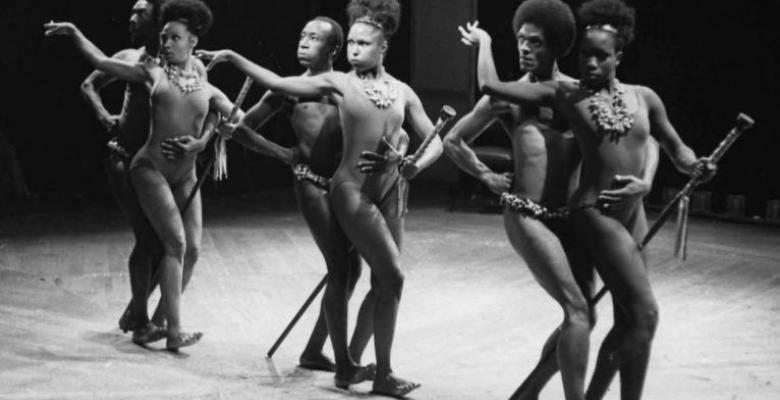Half a Century of a Classic
especiales

If you had to choose one, only a work, to represent Cuban modern dance; if a survey were ran among dancers, choreographers, teachers, and audiences to define the most emblematic of choreographies conceived for the company founded by Ramiro Guerra, today Cuban Contemporary Dance Company; if we had to select the great milestone of that group (and it’s a group that has marked many milestones) ... very probably most would coincide on one piece, which is an indisputable work of Cuban culture: Súlkary, by Eduardo Rivero.
This Thursday marks the 50th anniversary of its premiere in the García Lorca of today Great Theater of Havana Alicia Alonso. The former National Ensemble of Modern Dance presented on the night of May 13th, 1971 a combined program. Isidro Rolando, one of the six dancers in charge of defending Rivero's work, he remembers it: "Perhaps we weren’t aware of the repercussions of what we were dancing, but I can asure you that the public felt that it was an unusual work. People welcomed it with unusual enthusiasm. It was a huge roar. It was very exciting".
Clara Luz Collazo, another of the dancers at the premiere, she was very nervous, because she had to replace a dancer who got sick, Nereida Doncel. But she realized right away that it was going to be a classic. "I can't explain why I knew, but I did. The choreography had a soul, it had poetry, it had an inner strength. It held a truth. I knew it was going to be a life work. "
Clara Luz was right. Half a century has passed and Súlkary hasn’t aged. One watches the filming that three years later Melchor Casals directed for ICAIC and immediately notices its greatness, the iconicity of its art, the essentiality of movement. And the strength of its approach.
"Three couples performing a mating ritual, a sexual initiation on earth, an act of procreation. But all marked by an aesthetic pattern, an ancestral visuality, of a great culture that had nurtured our own culture ", sums up Isidro Rolando.
"Eduardo showed us pictures of African sculptures and said: 'I want sculptures to feel, to feel something more than mere human beings... while still being humans. That's how I felt ", remebers Clara Luz.
Eduardo had transcended the anecdote to end up recreating a sense of existence, its poetic gifts. A spirit. He had gathered the metaphor. The African he had put on the scene was not the slave subdued in Cuba, he was the African king, master of his destiny. He was, if you want to, a claim. The reaffirmation of a culture.
"Eduardo was showing the potential of an aesthetic. He was talking crucial issues in those years: the debate over the African roots of our heritage, from a point of view that now seems to us frankly decolonizing, "says theatrologist Marilyn Garbey.
And at the same time, adds the also critic Jorge Brooks, "highlighting values of our culture, which is a culture of resistance. Súlkary is, in short, a dance of resistance".
On the other hand, as highlighted by the dancer and professor Yaday Ponce, who danced with the Cuban Contemporary Dance Company, Eduardo Rivero's work summarizes the essences of Cuban modern dance, its school, its techniques, its theoretical stock, and its performing dimension.
"Eduardo was nurtured from the teaching of Ramiro Guerra, but he found his own path. Súlkary is the culmination of a search", affirms who was a co-worker and personal friend of Rivero, who was also a dancer and choreographer Santiago Alfonso. "Súlkary told many who until then looked at black people from a poorly disguised 'superiority' that there was a black beauty. Full, powerful. And that aesthetic is impressive.
It was the most beautiful and I think the first flower on a tree that soon gave extraordinary fruits ", he concludes.
Translated by Amilkal Labañino / CubaSí Translation Staff













Add new comment